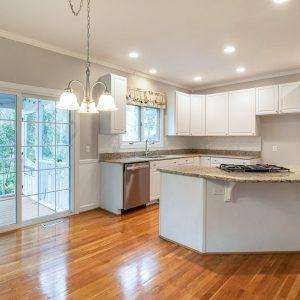You know they need help, and you’ve opted in! Hats off to you, but now you are expecting elderly or disabled folks to move in. How can you adapt your home to provide for their needs? The good news is that you don’t need a full remodel. But you do need to make some changes to make life more comfortable (and safer) for them. Here’s what you need to consider.
1. Preventing Falls
With your family-member already at risk, preventing falls is among the first things to consider. In-home safety grab bars help them to maintain independence, especially in private areas like the bathroom. Even when they need help with doing the basics, grab bars help them to get stability, gain confidence, and navigate the dangers that every person who is living with a disability dreads.
2. Ease of Access
Every disabled person is different, but ease of access remains a constant. Can your elderly or disabled relative pass through doorways with mobility aids to help them? The more independent they feel, the happier they’ll be.
Think about the width of doorways, replace steps with ramps, and consider stair lifts if they need to access a second floor. Remember that, even if you’re on guard and ready to help, they might embark on difficult and dangerous journeys themselves while you aren’t looking.
3. Give the Bathroom Extra Attention
Just about everybody has heard about elderly or disabled people getting into difficulties during their ablutions. Apart from those grab bars, consider extra bathroom design ideas like placing a commode (sans bucket) over the loo so that they have armrests to hang onto.
As for cleanup time, baths are out and showers are in. Simply placing a seat inside the shower can be a huge contributor to peace of mind. A shower with a hose attachment allows people living with disabilities to direct water as needed, helping them to see the shower as a pleasure rather than an ordeal.
4. The Privacy of the Bedroom
Wherever possible, allowing privacy helps disabled people to retain a degree of independence. They may need help when they get up, but placing a bell where it can easily be pressed solves the problem – provided they comply with using it. It’s also possible to get cot sides for beds that prevent them from getting out of bed unassisted.
However, not all disabled people will be happy with additions such as these. As a carer, weigh the benefits of additions such as these against their psychological impact.
5. Consider Yourself
Taking care of elderly or disabled people is a big commitment. As time passes, their needs may become greater, leaving you in the position of full-time carer. If you’re a family-member, payment for your services turns you into an employee: a position you may prefer to avoid.
At the same time, even if you feel equal to doing whatever it takes, unremunerated full-time care needs can quickly eat through your savings as well as your energy and free time.
Talk to your family about the potential for escalating care needs and explore the availability and cost of professional carers. You matter too!




